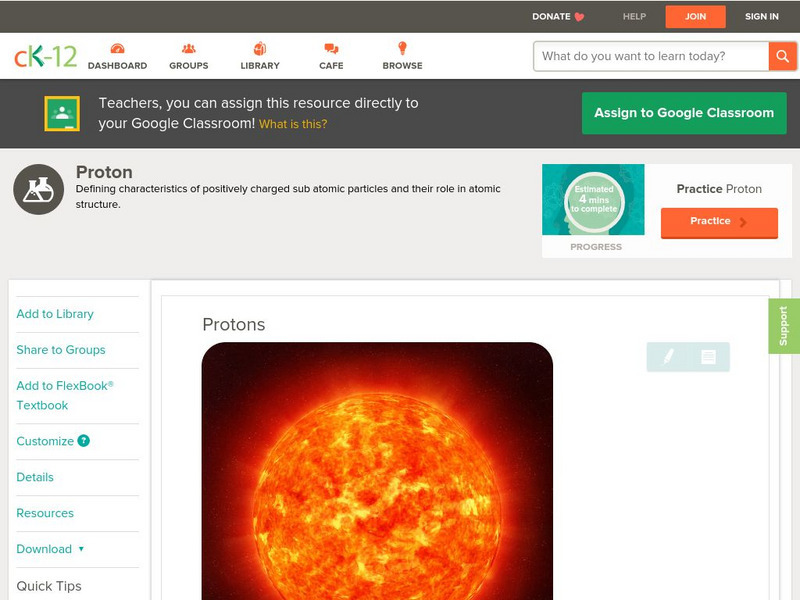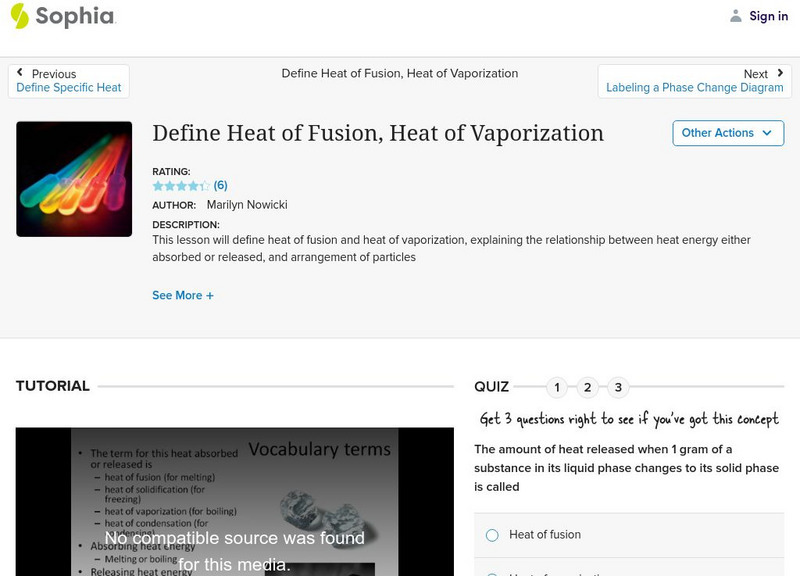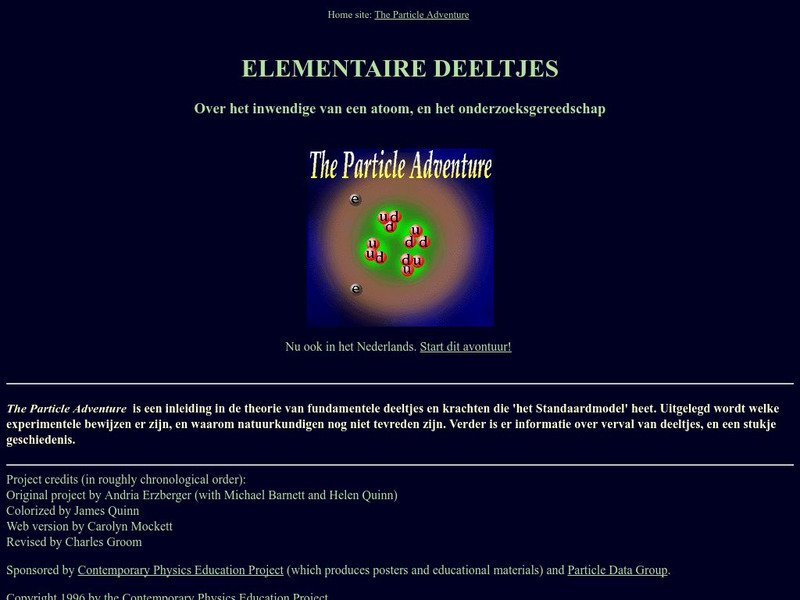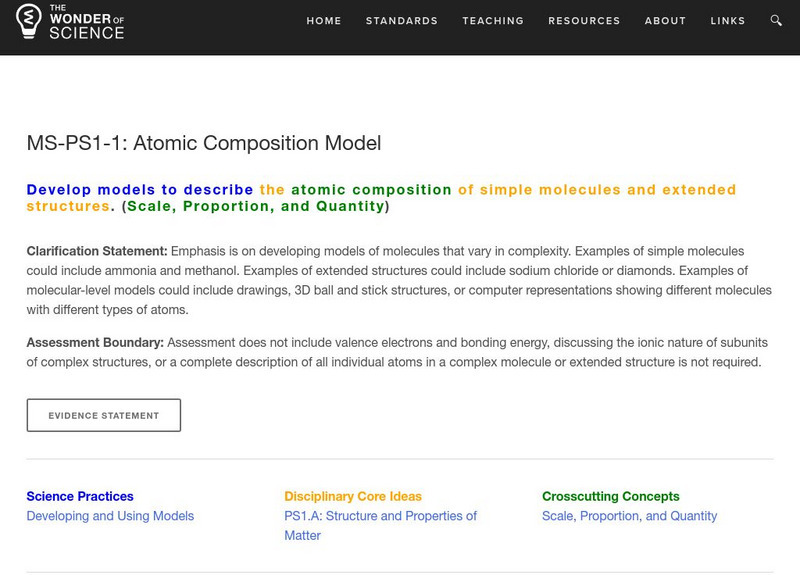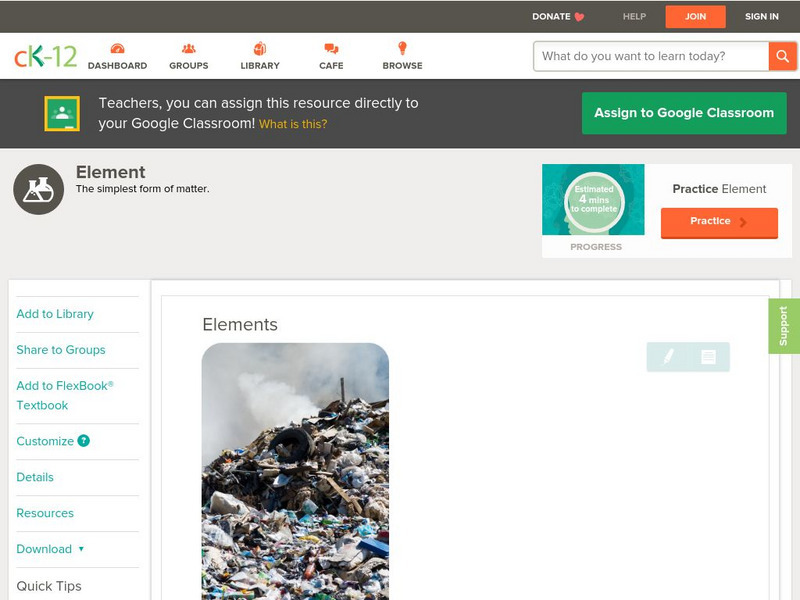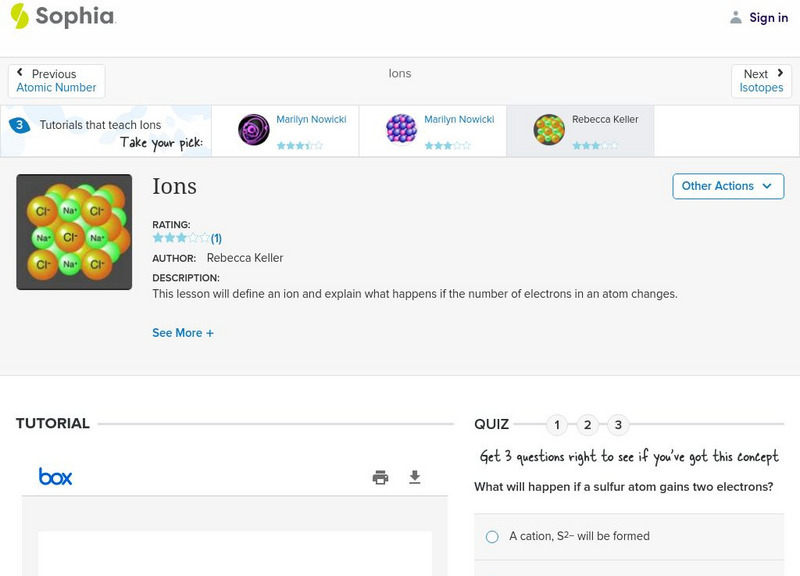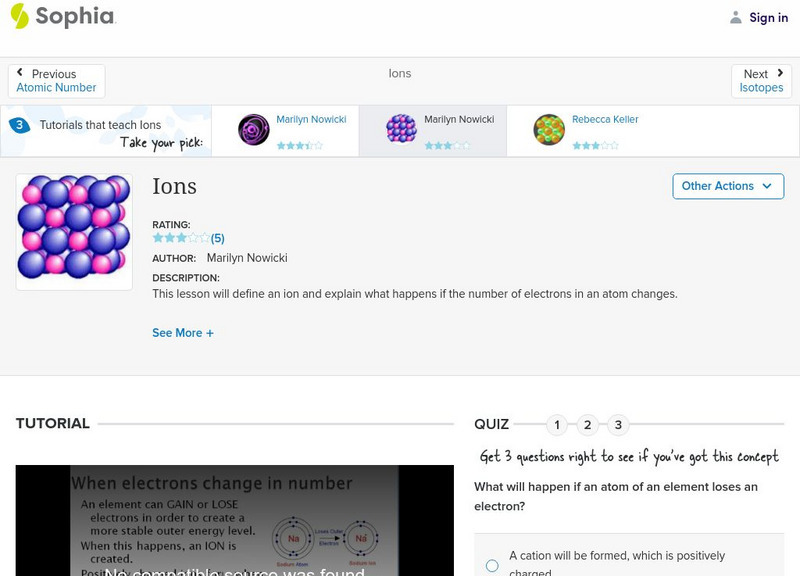CK-12 Foundation
Ck 12: Physical Science: Fundamental Particles
[Free Registration/Login may be required to access all resource tools.] Investigates fundamental particles and their discovery, and how they relate to fundamental forces.
CK-12 Foundation
Ck 12: Physical Science: Protons
[Free Registration/Login may be required to access all resource tools.] Protons and how they relate to elements, and what protons are made of.
CK-12 Foundation
Ck 12: Physical Science: Neutrons
[Free Registration/Login may be required to access all resource tools.] Neutrons and how they cause different isotopes of an element, and the particles in neutrons.
Sophia Learning
Sophia: Converting From Particles to Moles
A guided slide show presentation illustrating how to convert from particles to moles.
Sophia Learning
Sophia: Define Heat of Fusion, Heat of Vaporization
A narrated video tutorial defines two types of heat exchanges: heat of fusion and heat of vaporization. The content focuses on the relationship between heat energy either absorbed or released, and arrangement of particles. [3:42]
Other
Particle Adventure Dutch Version
Dutch version of the well-known "Particle Adventure" physics website that teaches students about atoms, mass, particle physics, and quantum physics. The site discusses theories related to physics and provides other links related to the...
Annenberg Foundation
Annenberg Learner: Virtual Particle Lab: Compressibility of Air
Explore the particle model of matter. Run the simulations and see if you can predict the results.
Physics Aviary
Physics Aviary: Maxwell Distribution Lab
This lab is designed to have students examine distribution of speeds for gases in a box.
Other
Beautiful Chemistry: Molecular Structures
These models show the structures of some basic molecules such as water and carbon dioxide, then move on to show more complex molecular strautures.
Physics Classroom
The Physics Classroom: Static Electricity: Neutral vs. Charged Objects
With this interactive tutorial, students explore the basic terminology and concepts of neutral and charged objects.
Frostburg State University
General Chemistry Online: Atoms, Elements, and Ions Faq
Get the skinny on all things frequently asked about isotopes, subatomic particles and atomic theory. Find out what a "dalton" is or the difference between Na+ and Na.
The Wonder of Science
The Wonder of Science: Ms Ps1 1: Atomic Composition Model
A collection of lesson plans for helping young scholars understand atomic composition. Site uses work samples, phenomena, assessment templates, and videos to plan lessons to describe the atomic composition of simple molecules.
CK-12 Foundation
Ck 12: Physical Science: Electrons
[Free Registration/Login may be required to access all resource tools.] Explores electrons and their place in atoms.
CK-12 Foundation
Ck 12: Physical Science: Elements
[Free Registration/Login may be required to access all resource tools.] Discusses elements and their different properties, the history of elements, and how atoms relate to elements.
CK-12 Foundation
Ck 12: Physical Science: Atoms
[Free Registration/Login may be required to access all resource tools.] Atoms and how they are related to elements, and the particles that make up atoms.
TED Talks
Ted: Ted Ed: The Science of Macaroni Salad: What's in a Molecule?
Josh Kurz breaks macaroni salad down to its smallest chemical components. [3:14]
Khan Academy
Khan Academy: Applying Gravity to a Particle
Understand how we simulate the effect of gravity on a particle.
TED Talks
Ted: Ted Ed: The Higgs Field, Explained
One of the most significant scientific discoveries of the early 21st century is surely the Higgs boson, but the boson and the Higgs Field that allows for that magic particle are extremely difficult to grasp. Don Lincoln outlines an...
Trinity College Dublin
The History of Mathematics: Young
A short sketch of the life and work of Thomas Young (1773-1829 CE). Traces early upbringing and education and his scientific discoveries and contributions.
Sophia Learning
Sophia: Ions: Lesson 2
This lesson will define an ion and explain what happens if the number of electrons in an atom changes. It is 2 of 3 in the series titled "Ions."
Sophia Learning
Sophia: Light Waves: Lesson 1
This lesson will introduce light waves and describe how a particle can travel as a photon or a wave. It is 1 of 4 in the series titled "Light Waves."
Sophia Learning
Sophia: Mixed Conversion Problems: Lesson 2
This lesson explains how to approach practice problems when trying to determine what final quantity is being asked for. It is 2 of 2 in the series titled "Mixed Conversion Problems."
Sophia Learning
Sophia: Converting From Moles to Particles: Lesson 2
This lesson demonstrates how to convert from moles to particles (molecules, atoms, ion). It is 2 of 2 in the series titled "Converting from Moles to Particles."
Sophia Learning
Sophia: Ions: Lesson 1
This lesson will define an ion and explain what happens if the number of electrons in an atom changes. It is 1 of 3 in the series titled "Ions."



